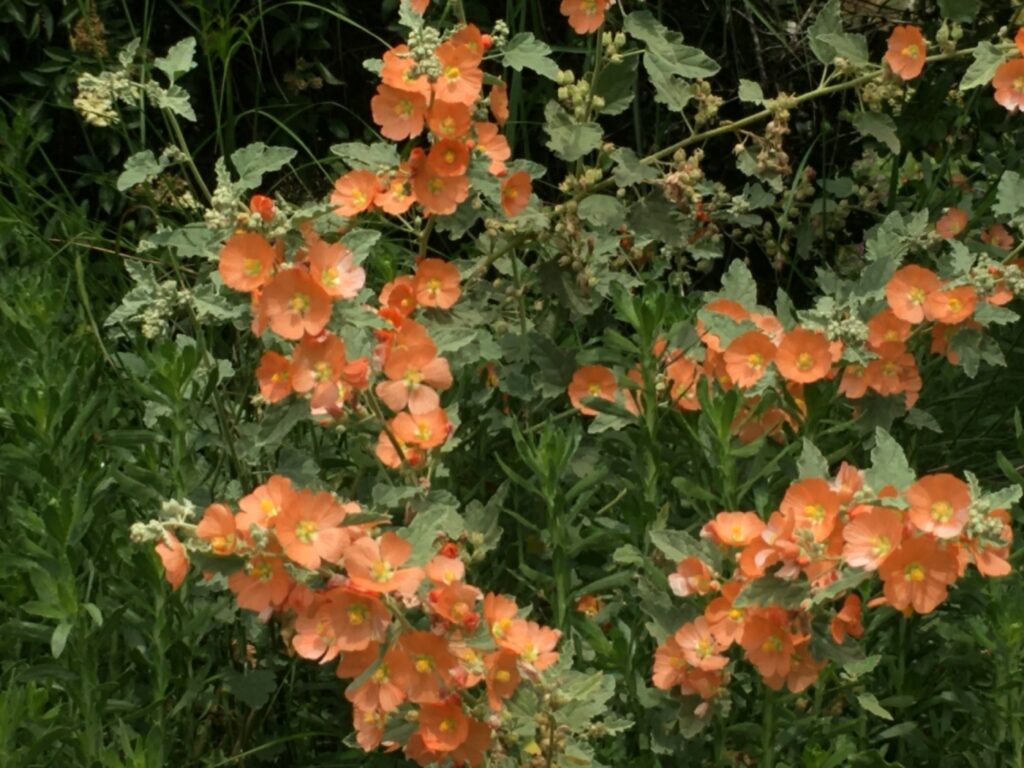
The recent deluge of rain is a stark reminder that mudslides are an ever-present danger on the slopes that surround us, not only in the greater Los Angeles area but throughout communities in Southern California at large.
This reality naturally brings to mind strategies for keeping slopes in place. Terracing is the most ancient and surest method for erosion control on slopes. From growing potatoes and maize in South America and cultivating millet in West Africa to orcharding olives in the Middle East and rice and tea farming in Asia, terraced agriculture has been successfully practiced for thousands of years.
You can make your own terraces with the help of discarded railroad ties or utility poles. However, when such ties and poles are recycled for horticultural purposes, it is important to be aware that their wood has been treated with a preservative known as creosote, a compound that contains toxic chemicals. Therefore, it is not advised to grow edibles where terracing is accomplished with such wood. Nevertheless, should you wish to construct terraces or raised beds with railroad ties, you can find them in eight-foot lengths for $20 each at A & K Railroad Materials (akrailroadmaterials.com) in Mira Loma.
There are certain plants that prevent erosion on slopes and silverberry (Elaeagnus pungens) is at the top of the list. Growing to a height of 15 feet, an established stand of silverberry will not require irrigation. Although it is not a legume like beans or peas, it shares with them the capacity to make its own nitrate fertilizer due to its symbiosis with nitrogen-fixing bacteria that inhabit its roots. Silverberry has many virtues beyond erosion control and stout tolerance of drought. It can grow in any type of soil and can withstand cold down to five degrees. It has edible fruits and seeds, although the latter have a fibrous coat that is best removed before to seed consumption.
Silverberry flowers, although barely visible, are powerfully fragrant and bloom from November through February. Their “migratory fragrance” – a scent that travels a distance and does not need to be sniffed from the flower itself – is shared by only a few plants, among them angel’s trumpet (Brugmansia spp.) and the related jimsonweed (Datura stramonium), as well as citrus trees in general and orange trees in particular. Other flowers that emit a powerful perfume that wafts in the air include mock orange (Philadelphus coronarius), star jasmine (Trachelosperum jasminoides), Arabian jasmine (Jasminum sambac), and night-blooming jasmine (Cestrum nocturnum). If you know of other flowers with a migratory fragrance, you are invited to write to me about them.
Getting back to plants that prevent erosion or sloping terrain, Carpet roses are a wise choice. While these roses do serve as a ground cover, they may also grow several feet tall or taller. You can find them in 12 colors, including red, white, pink, yellow, coral, apple-blossom and Pink Splash, a variety that sports flowers variegated with hot pink and pale pink. One advantage of Carpet roses is that they are “leaf swallowers.” This term is used by Kathy Jentz, author of “Groundcover Revolution” (Cool Springs Press, 2023) and refers to ground covers that “swallow up” foliage that falls on them from overhead trees as opposed to ground covers where such leaves form a layer of leaves that obscures them from view. Sword ferns, whether the widely available Boston fern (Nephrolepis exaltata) or the California native western sword fern (Polystichum munitum, are leaf swallowers that offer erosion control as well and thrive in shady locations.
California native buckwheats also root well into slopes, reducing the possibility of mudslides. A mixed slope of buckwheats is appealing since they come in a variety of forms and, among the different species, you have flowers in different colors to look at throughout the year. Santa Cruz Island buckwheat (Eriogonum arborescens) has white flowers that turn to pink and then burnt orange as they fade. Saffron buckwheat has sulfur yellow flowers and silver-gray foliage, red buckwheat (Eriogonum grande var. rubescens) has red or pink flowers, and coast buckwheat (Eriogonum latifolium) has pink flowers. Buckwheats are famous for attracting butterflies of every description and their flowers are wonderful candidates for everlasting arrangements. They are evergreen and will self-sow when soil conditions are favorable.
California native of the week: Desert mallow (Sphaeralcea ambigua) is one of the most floriferous California natives as it may produce flowers throughout the year. Although winter and spring are its predominant flowering seasons, it will also bloom in summer if soaked once a month during that season. It is frequently referred to as apricot mallow since that is the color of the flowers generally seen, although pink, white, lavender, salmon, and reddish orange blooms are also encountered. Grayish leaves are crinkly and slightly lobed; flowers and leaves seem to be miniature versions of what you find on hollyhock, an apricot mallow relative. This is a plant with an infinite capacity for hot and dry conditions but is susceptible to predations of squirrels, rabbits, and other animals, particularly when young, so you may initially want to cage if you are subject wildlife visits.
Please send questions, comments, and photos to joshua@perfectplants.com.
